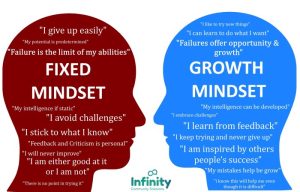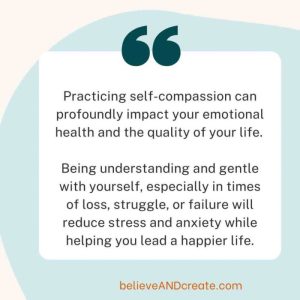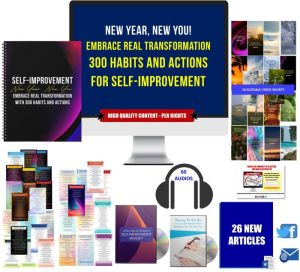Best Depression Apps A Comprehensive Guide
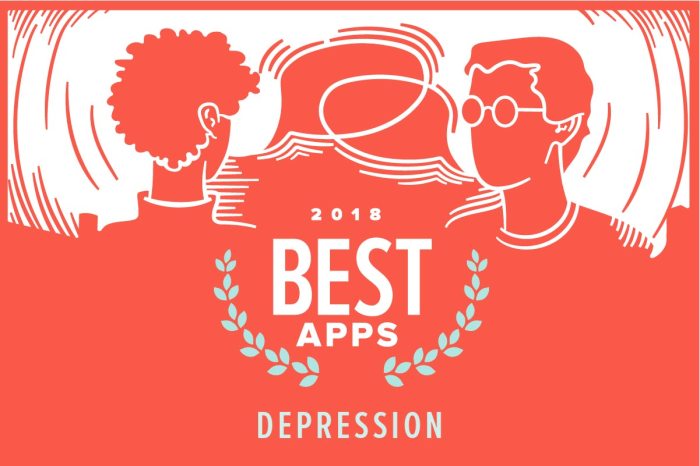
Best depression apps are transforming mental healthcare, offering accessible and convenient support for individuals struggling with depression. These apps provide a range of tools and resources, from guided meditations and cognitive behavioral therapy (CBT) techniques to community forums and connections with mental health professionals. This guide explores the features, benefits, and limitations of leading depression apps, empowering users to make informed decisions about their mental well-being.
The increasing prevalence of depression highlights the urgent need for effective and accessible support systems. Many individuals face barriers to traditional therapy, including cost, accessibility, and stigma. Mobile applications offer a promising solution, providing readily available tools and resources that can complement professional care or serve as a first line of defense for those seeking help. This guide aims to provide a comprehensive overview of the current landscape of depression apps, examining their features, efficacy, and potential impact on mental health.
Depression Support Resources and Community Features
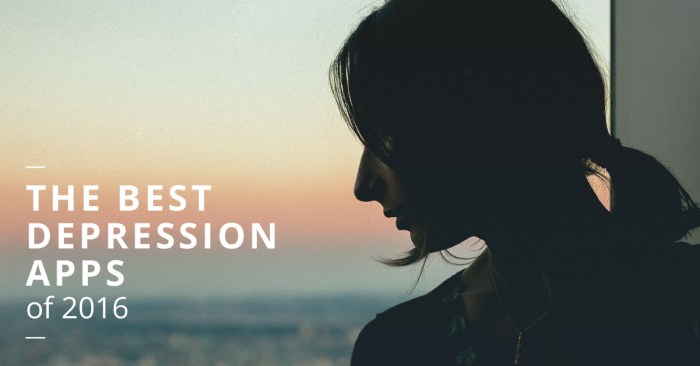
Many depression apps recognize the significant role of community and readily available resources in managing mental health. These features move beyond simply providing tools for self-management and actively foster a sense of connection and shared experience among users. This is crucial, as feeling isolated is a common symptom of depression, and connecting with others who understand can be incredibly beneficial.Several apps successfully integrate support resources and community features to enhance user experience and treatment efficacy.
These features vary widely in their design and functionality, but all share the common goal of creating a supportive environment.
Types of Support Resources Offered
Many apps offer a range of support resources designed to complement the core functionalities. These resources often include evidence-based articles and information on depression, its symptoms, and treatment options. Some apps provide guided meditations or mindfulness exercises, while others integrate educational materials on coping mechanisms and stress reduction techniques. Furthermore, many apps offer access to professional help, providing information on finding therapists or connecting users with relevant helplines.
For example, some apps may feature a directory of therapists or offer direct messaging capabilities to connect users with mental health professionals. The availability and type of resources vary depending on the specific app and its target audience.
Community Building Features in Depression Apps
Apps employ various strategies to foster a sense of community. Many incorporate moderated forums or discussion boards where users can share their experiences, offer support to one another, and discuss common challenges. Some apps use anonymity features to encourage open and honest communication, reducing the stigma associated with mental health issues. Others utilize features like peer-to-peer messaging or group chat functions, allowing users to connect directly with others facing similar challenges.
For instance, an app might organize virtual support groups based on shared experiences, such as dealing with anxiety alongside depression or navigating specific life transitions. This allows users to connect with individuals who understand their unique struggles.
Hypothetical Community Feature: A Collaborative Journaling System
A valuable community feature for a depression app could be a collaborative journaling system. This system would allow users to create private journals, accessible only to themselves, but also to opt into sharing anonymized excerpts or themes from their entries with a designated community group. This could be a group based on shared diagnoses, similar life circumstances, or specific treatment approaches.
The system would employ advanced privacy controls to ensure user anonymity and data protection. The benefits would be multifaceted: it could foster a sense of shared experience, provide a safe space for expressing feelings, and allow users to learn from and support each other’s journeys. The anonymity would minimize the risk of judgment and encourage open participation.
Furthermore, the system could use natural language processing to identify common themes and trends, allowing the app developers to tailor support resources and community discussions to the specific needs of the user base. For example, if a significant number of users mention struggles with sleep, the app could automatically highlight relevant articles and resources on sleep hygiene.
Therapy and Counseling Options Integrated or Linked Through Apps
Many mental health apps now integrate or link to various therapy and counseling options, expanding access to professional support. This integration offers a blend of convenience and professional guidance, potentially revolutionizing how individuals access mental healthcare. The range of therapeutic approaches available through these apps is steadily increasing, offering diverse options to suit individual needs and preferences.Many apps incorporate or provide access to different therapeutic approaches.
Cognitive Behavioral Therapy (CBT) and Dialectical Behavior Therapy (DBT) are particularly common. CBT focuses on identifying and modifying negative thought patterns and behaviors, while DBT emphasizes emotional regulation and distress tolerance skills. Other approaches, such as Acceptance and Commitment Therapy (ACT) and mindfulness-based therapies, are also increasingly integrated into app-based mental health services. The specific therapies offered vary widely depending on the app and the therapist’s expertise.
Types of Therapy Offered Through Apps
Apps offering therapy typically integrate one or more therapeutic modalities. Some apps focus on a specific therapy, such as CBT, while others offer a more eclectic approach, combining elements of different therapies to create a personalized treatment plan. For example, an app might use CBT techniques to address anxiety and incorporate mindfulness practices for stress reduction. The level of therapist involvement also varies.
Some apps offer self-guided programs based on therapeutic principles, while others provide direct access to licensed therapists for online sessions. The selection of therapies offered is influenced by factors such as the app’s developers, target audience, and the licensing regulations in the app’s operating region.
Advantages and Limitations of App-Based Therapy Supplements
Using apps as a supplement to traditional therapy offers several advantages. The convenience of accessing therapy anytime, anywhere, can be particularly beneficial for individuals with busy schedules or limited mobility. Apps often provide tools for self-monitoring and tracking progress, which can enhance treatment efficacy. Moreover, the anonymity offered by some apps may reduce the stigma associated with seeking mental health support.
However, limitations exist. App-based therapy may not be suitable for individuals with severe mental illness requiring intensive in-person care. The lack of face-to-face interaction can limit the therapeutic relationship and the ability to fully understand nonverbal cues. Additionally, the quality of therapy offered through apps can vary significantly, highlighting the importance of selecting reputable providers and apps.
Comparison of Therapy Apps and Support/Resource Apps
Apps offering direct therapy differ significantly from those that only provide support and resources. Therapy apps typically involve interaction with a licensed therapist, personalized treatment plans, and ongoing support. They often incorporate features like secure messaging, video conferencing, and progress tracking tools. In contrast, support and resource apps primarily offer information, self-help tools, and community forums. While these apps can be helpful for managing symptoms and finding support, they do not provide the same level of personalized professional guidance as therapy apps.
The choice between a therapy app and a support/resource app depends on individual needs and the severity of mental health challenges. Individuals with mild symptoms might find support apps sufficient, while those with more severe conditions may benefit from the personalized attention of a therapy app.
Building Resilience and Coping Mechanisms within Apps
Many mental health apps incorporate strategies to foster resilience, a crucial factor in managing and recovering from depression. Resilience isn’t about avoiding hardship, but rather the ability to bounce back from adversity, adapt to change, and thrive even in the face of challenges. By integrating evidence-based techniques, these apps provide users with tools and resources to cultivate this vital skill.
This involves promoting self-awareness, developing coping skills, and fostering a sense of self-efficacy.Apps achieve this by applying principles of cognitive behavioral therapy (CBT), mindfulness, and positive psychology. CBT techniques, for example, help users identify and challenge negative thought patterns, replacing them with more realistic and helpful ones. Mindfulness exercises promote present moment awareness, reducing rumination and anxiety. Positive psychology interventions focus on building strengths and fostering gratitude, increasing overall well-being.
The design and features of these apps reflect these principles through interactive exercises, personalized feedback, and progress tracking.
Examples of Resilience-Building Activities in Depression Apps
Several approaches are used within apps to cultivate resilience. These methods are often presented through interactive exercises, guided meditations, and journaling prompts, designed to be engaging and accessible to users. Consistent use of these features can significantly contribute to a user’s ability to manage depressive symptoms and build long-term resilience.
- Guided meditations and mindfulness exercises: These activities help users focus on the present moment, reducing overthinking and anxiety, which are common symptoms of depression. Apps often provide a variety of guided meditations, focusing on different aspects of mindfulness, such as breath awareness, body scan meditations, and loving-kindness meditations. Visualizations of calming scenes might also be included.
- Cognitive restructuring exercises: These exercises help users identify and challenge negative thought patterns, replacing them with more balanced and realistic perspectives. Apps might use interactive tools to help users track negative thoughts, identify cognitive distortions (like catastrophizing or all-or-nothing thinking), and develop alternative, more helpful ways of thinking. Examples include thought records and challenging negative automatic thoughts.
- Goal setting and progress tracking: Setting achievable goals, no matter how small, and tracking progress towards them can boost self-efficacy and motivation. Apps often incorporate features that allow users to set personalized goals, break them down into smaller steps, and monitor their progress over time. Visual representations of progress, such as charts or graphs, can be particularly motivating.
- Gratitude exercises: Focusing on positive aspects of life can improve mood and overall well-being. Apps might include prompts for daily gratitude journaling, encouraging users to reflect on things they are thankful for. This simple practice can shift perspective and foster a more positive outlook.
- Self-compassion exercises: Practicing self-compassion involves treating oneself with kindness and understanding, especially during difficult times. Apps might include guided meditations or exercises focused on self-acceptance and self-soothing. This can help reduce self-criticism, a common feature of depression.
Sleep and Mental Health
The connection between sleep quality and mental well-being, particularly concerning depression, is undeniable. Insufficient or poor-quality sleep can exacerbate symptoms of depression, creating a vicious cycle where sleep disturbances worsen mood and vice-versa. Conversely, improving sleep patterns can significantly contribute to improved mental health outcomes. This section will explore how specific apps leverage technology to address sleep problems and promote better sleep hygiene.Individuals struggling with depression often experience sleep disturbances, including insomnia, difficulty falling asleep, frequent awakenings, and early morning awakenings.
These disruptions disrupt the restorative process of sleep, leaving individuals feeling exhausted and further increasing vulnerability to depressive symptoms. The use of technology, specifically mobile applications, offers a convenient and accessible way to intervene and support improved sleep habits. Many apps provide personalized guidance and tools to address the underlying causes of sleep problems, promoting better sleep hygiene and improving overall mental health.
App-Based Interventions for Sleep Problems
Many apps utilize evidence-based techniques to address sleep problems. These techniques often include cognitive behavioral therapy for insomnia (CBT-I), relaxation exercises, sleep hygiene education, and sleep tracking capabilities. CBT-I, for example, helps individuals identify and modify unhelpful thoughts and behaviors that contribute to insomnia. Apps might guide users through exercises to challenge negative thoughts related to sleep, establish consistent sleep schedules, and create a relaxing bedtime routine.
Relaxation techniques such as guided meditation, deep breathing exercises, and progressive muscle relaxation are frequently incorporated to promote relaxation and reduce anxiety before bed. Sleep tracking features allow users to monitor their sleep patterns, identifying potential areas for improvement and providing valuable data for personalized interventions.
Common Features of Sleep Improvement Apps
Apps designed to improve sleep and manage insomnia often share several core features. These features contribute to a comprehensive approach to improving sleep quality and promoting better sleep hygiene.A crucial feature is personalized sleep plans. These plans often adapt to individual needs and preferences, taking into account factors such as sleep schedules, sleep duration goals, and individual preferences for relaxation techniques.
Many apps also incorporate sleep tracking capabilities, allowing users to monitor their sleep patterns over time and identify trends or patterns. This data can be used to adjust the sleep plan and personalize the interventions. Educational resources on sleep hygiene are commonly integrated, providing information on factors that influence sleep quality, such as caffeine and alcohol consumption, screen time before bed, and consistent sleep schedules.
Finally, many apps offer a range of relaxation techniques, including guided meditations, calming soundscapes, and breathing exercises. These techniques help users relax and prepare for sleep.
Workplace Mental Health Support Through Apps: Best Depression Apps

Many apps are now designed to address the specific mental health challenges faced by individuals in the workplace, offering a discreet and accessible avenue for support. These apps recognize the unique stressors of professional life and aim to provide tools and resources to promote well-being and productivity. They move beyond general mental health support to incorporate features directly relevant to the work environment.Apps catering to workplace mental health needs often incorporate features designed to mitigate stress and promote a healthier work-life balance.
This proactive approach aims to prevent burnout and improve overall employee well-being. Such features contribute to a more supportive and productive work environment.
Stress Management and Work-Life Balance Features, Best depression apps
Several apps offer guided meditations and mindfulness exercises specifically tailored to workplace stress. These might include short sessions designed to be incorporated into a busy workday, focusing on techniques to manage anxiety related to deadlines, meetings, or difficult colleagues. Others integrate tools for time management and task prioritization, helping users structure their day more effectively and avoid feeling overwhelmed.
Some apps even include features that encourage breaks and promote physical activity, recognizing the importance of integrating movement and rest into the workday. For example, an app might send reminders to take short walks or stretching breaks throughout the day, promoting physical well-being and reducing mental fatigue. Calendar integration is also common, allowing users to schedule personal time alongside work commitments, fostering a more balanced lifestyle.
Facilitating Communication Between Employees and Employers
While respecting employee privacy, some apps facilitate communication between employees and employers concerning mental health. This can involve secure messaging systems within the app, allowing employees to discreetly contact HR or designated mental health professionals within the company. These features aim to reduce stigma and create a more open dialogue about mental health in the workplace. The app might also offer resources for employers to understand and support their employees’ mental health needs, providing guidance on creating a more supportive work environment.
For instance, an app could provide data (anonymized and aggregated) on employee stress levels to help employers identify potential issues within the workplace and implement appropriate interventions. This data-driven approach allows for proactive measures to improve workplace well-being.
Overcoming Addictions with the Help of Depression Apps
Many individuals struggling with depression also face the challenge of addiction, highlighting the crucial need for integrated mental health support. Fortunately, some depression apps are beginning to address this co-occurrence, offering tools and resources to aid in both depression management and addiction recovery. These apps recognize that treating these conditions separately is often ineffective, and a holistic approach is vital for long-term well-being.These apps integrate addiction recovery strategies by incorporating principles of cognitive behavioral therapy (CBT), motivational interviewing, and relapse prevention planning directly into their existing frameworks for depression management.
This means users aren’t navigating separate apps or programs; instead, they receive comprehensive support within a single, user-friendly interface. This integrated approach simplifies the process, reduces stigma, and potentially increases adherence to treatment plans.
Addiction Recovery Tools within Depression Apps
Many apps utilize a variety of methods to support users in overcoming addiction. These often include guided meditations focused on mindfulness and craving management, personalized relapse prevention plans that help users anticipate and navigate high-risk situations, and educational modules explaining the neurobiology of addiction and the benefits of recovery. Some apps also feature progress trackers to monitor sobriety milestones and celebrate achievements, fostering a sense of accomplishment and reinforcing positive behaviors.
Furthermore, many include features for connecting with support groups or therapists specializing in addiction treatment, thus extending the reach of in-app support.
Examples of In-App Resources for Addiction Challenges
One example of an in-app resource might be a daily journal prompt designed to help users identify triggers and develop coping mechanisms for cravings. Another could be a module that teaches users about the stages of change in addiction recovery, helping them understand their current stage and develop strategies for moving forward. Some apps might offer interactive exercises that simulate real-life scenarios, allowing users to practice their coping skills in a safe and controlled environment.
Finally, the integration of a personalized relapse prevention plan, allowing users to identify high-risk situations and develop strategies to avoid or manage them, is a key feature in many of these apps. These tools work in tandem with the app’s other features, providing a holistic approach to managing both depression and addiction.
Ultimately, the best depression app for any individual depends on their specific needs and preferences. While technology cannot replace professional mental health care, these apps offer valuable tools and support that can significantly improve the lives of those struggling with depression. By understanding the features and limitations of different apps, individuals can make informed choices and leverage technology to enhance their mental well-being journey.
Remember to always consult with a healthcare professional for personalized guidance and treatment.
FAQ Corner
Are these apps a replacement for therapy?
No. These apps are supplemental tools and should not replace professional therapy or medical advice. They can be helpful additions to a comprehensive treatment plan.
Are my data and privacy protected in these apps?
Privacy policies vary between apps. Carefully review the privacy policy of any app before use to understand how your data is collected, used, and protected.
What if I experience a mental health crisis while using an app?
Most apps include contact information for emergency services or crisis hotlines. If you experience a crisis, contact emergency services immediately.
How much do these apps cost?
Pricing varies greatly, from free apps with limited features to subscription-based apps with more comprehensive content and functionalities.



